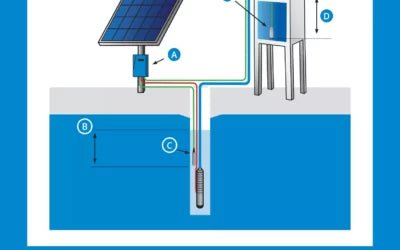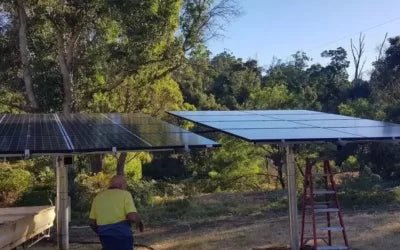Solar water pumps have become part of everyday life for many farmers. These pumps are a revolutionary addition to agribusiness, providing an efficient and eco-friendly way to collect water from rivers, lakes and wells directly to your farm. Solar water pumps require minimal maintenance and reduce utility bills, saving you time and money in the long run. They also use a fraction of the power that their electric counterparts would use. Farmers in Australia have been quick to see the advantages these pumps offer.

If you’re looking to purchase solar water pumps, consider these factors first to help you make your big decision.
1. What Is Your Water Source?
This will depend on various factors. For example, if you are considering a well and it’s your first time, we highly recommend that you talk to your neighbours to see how deep the other wells in the area are before having your own put in. That’s just one example. There are many other water source choices. Consider the following:
-
Rain Catch Cistern
A rain catch cistern is an environmentally friendly water source. On top of that, it’s low-cost. Having said that, here are a few glaring disadvantages. If it doesn’t rain, you have to bring in water from another source. Also, a lot of debris can end up in the cistern and the water must be treated if it’s meant for human consumption.
-
Shallow Wells and Springs
Another low-cost water source are wells that are under 20 ft. deep or springs. The main disadvantage with these is that dirty surface water can get in and contaminate the well or spring water. If you’re going to use these water sources for drinking, be sure to treat it first.
-
Medium-Depth Well
A medium-depth well is around up to 200 feet deep. If your well has modern casings and caps, coupled with this depth, there should be little chance of water contamination.
-
Deep Well
Wells that are between 200 ft. and 450 ft. deep are considered deep wells. Wells this deep could cost around $10,000 and up, especially when you consider the compatible water pump that will go with it. At this depth, water contamination is hardly ever a problem. This is where a cost-effective solar water pump can be financially beneficial.
-
Very Deep Well
What’s considered a “very deep well”? Typically, over 450 ft. deep. Keep in mind that at these depths, the cost of your well and pump combined can reach $20,000. At this price range, using a solar water pump is almost required to reduce costs.
2. What Will You Use the Water For?
Another important factor to consider is what your water will be used for. The following are some examples of water usage.
-
Residential Water
Residential or “domestic” water is commonly used for the kitchen sink, bathroom sinks, bathtub or shower, dishwashers, washing machines, and for drinking.
-
Livestock and Irrigation
This is probably the most common use for LORENTZ solar water pumps. This water is pumped to livestock tank or into your gardens and orchards.
-
Special Uses
Special uses could include water fountains, solar hot water systems and other non-traditional or essential uses of water.
3. What Power Sources Are You Using
The power source you will be using is another critical factor to consider when you are looking to purchase solar water pumps. That’s because some systems use solar energy exclusively or directly, while others use hybrid or blended power. Here are some of the different types of power sources.
-
Direct Solar Power
Many DC well pumps can be run directly using solar panels. While direct solar is becoming less common as they are seen as outdated, they are still popular in the agricultural industry and among homeowners because they are less costly.
The issue with this type of system is that if you don’t have battery storage, the power to run the pump will only be available when the solar panels are operational. For instance, there will be no pumping during cloudy weather or at night.
-
Solar To Battery Storage
This is now arguably the most common type of power source in the solar energy industry. In this model, you are using your solar panels to charge a battery bank and then running your well pump off the battery storage. This way, you eliminate the risk of pumping outages when sunlight isn’t present. This makes your well pump far more reliable than a direct solar powered well.
-
Hybrid and Blended Power
This is one of the most popular solar power systems among farmers and other agribusinesses because of its innovative use of multiple power sources. In a hybrid or blended power model, your solar water pump can be powered by solar energy, electric grid (the public utility-provided electricity you have in your home), generators, and other systems.
4. Well Pump Types
-
Submersible Pumps
This is a type of pump that’s waterproof and can be submerged in the water of your well. All of the electrical connections are waterproof and are submergible as well.
-
Surface Pumps
Unlike submersible pumps, surface pumps are not waterproof. These units should be placed in a waterproof pump pit or pump house. However, if they are placed too high above the water level, the pump can have suction problems. This will make the system ineffective or even damage the pump.







